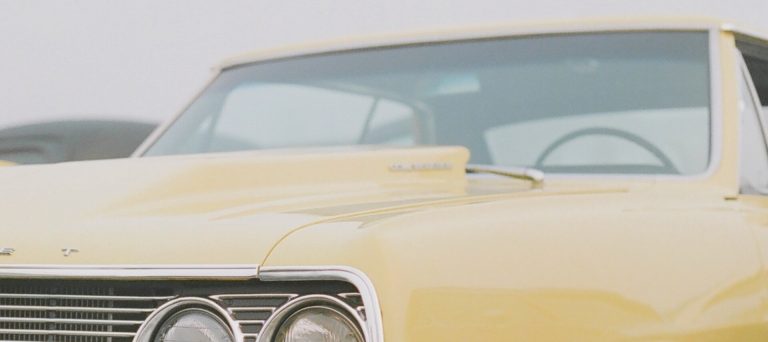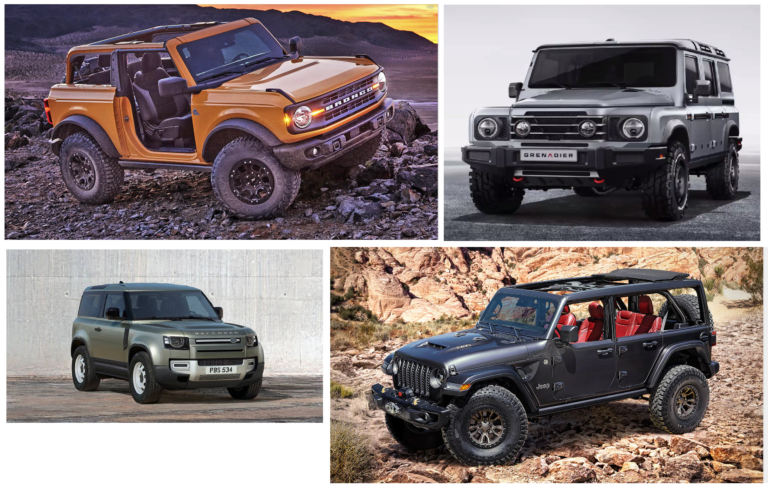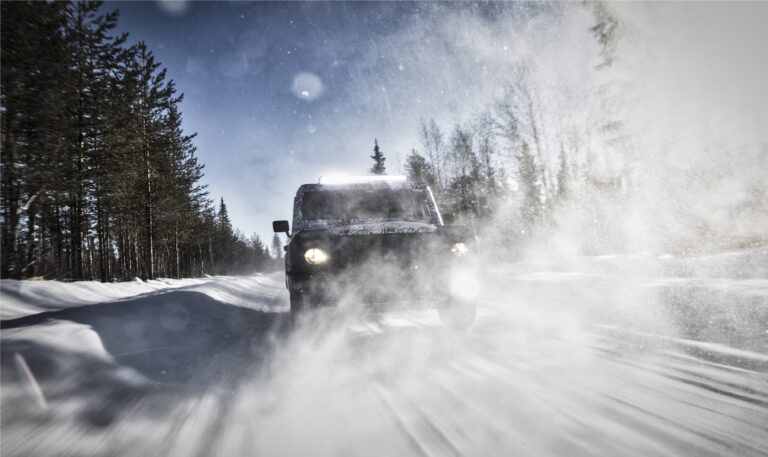Commercial vehicles are boring. It is hard to spruce up a lorry within taste or reason, or to make a van look attractive beyond considerations like carrying capacity and fuel consumption. But that hasn’t stopped people from trying.
The results are diverse, limited and often impractical outright. For instance, we have things like a Ford Transit Rally and the fastest production pick-up truck in the world: the Holden Maloo. It seems like the only way to make a car exciting is to make it fast. Or is it? But why would you want to tart up an object used for carrying stuff?
One of the most intense battles in this column has been in the field of double-cab pick-ups. They are commercial vehicles and were taken as such until recently, when insistent use on personal matters led the authorities to reclassify it as a family car. And with good cause too: look at the Ford Ranger’s recent manifestations and the Nissan Navara.
They look and feel more like SUVs than as transport solutions for the entrepreneur whose payload rarely exceeds a tonne. And then entered a young upstart that overturned everything we thought we knew about double-cab pickups: the Volkswagen Amarok.
WHAT IS THE VW AMAROK?
It is one of Volkswagen’s list light commercial vehicles, fielded alongside the microscopic Caddy and the Transporter. It is a huge, double-cab pick-up that comes with either manual or automatic transmission. If you buy one from DT Dobie, you are limited to a manual transmission; they don’t sell lazymatic slushbox versions of this vehicle. If you buy it where automatics are available, you will find the automatic transmission only in the higher-spec cars.
The exclusive availability of a row-your-own six-on-the-floor cogbox may sound like good news to hardened petrophiles but not so fast. Let’s first look at this car.
EXTERIOR: 91 PER CENT
Such a high score. Why? The Amarok’s external appearance is the most inoffensive car design imaginable. What should be straight is straight (panels, grilles, windows and edges). What should be big is big (bumpers, lamps, mirrors and bed).
What should be semi-circular is rectangular. What? Aah, you might not have noticed one of the more clever design cues on the Amarok. To further accentuate the hugeness of this vehicle and possibly either aggravate or tone down the chances of the whole thing looking under-shod, the wheelarchs are square.
It might seem odd in theory, but it works in practice. It’s also a relief from the swoopy curves on the Mitsubishi L200 and the previous Hilux, which seemed a bit strange at first and took some getting used to; and maybe just a little bit desperate. In retrospect, maybe the swoopy lines were not a misplaced fantasy on the designer’s part: double-cabs are less of pukka commercial vans and more of lifestyling, offroading, overlanding, Rubicon-crossing posemobiles.
Now, the patrician Canyon model comes with that garish burnt-orange colour scheme, along with a black roll bar atop which is mounted a light cluster. Seventeen-inch rims are standard, as is chunky rubber and a colour-coded front bumper and side mirrors.
For some reason, the rear bumper stays black, decked out in high-gloss paint (It later transpires that it actually is a colour scheme). There is a black strip running on the underside of the side mirrors and the lower peripheries of the doors. Round this off with a chrome grille and the result is quite fetching.
INTERIOR: 75 PER CENT
Another high score. Of all the double-cabs currently on sale, I’d say the Amarok’s interior leads, but this, again, is specific to the top-line Canyon. It looks and feels like a saloon car inside. You can only tell you are in a large car because it really feels big when driving it in the early stages, but the mirrors counteract this by giving passable view rearwards. The biggest highlight of the interior is the same, burnt orange colour stitching on the leather seats, steering wheel and leather boot around the gear knob; as well as on the edges of the air vents. It makes this interior feel expensive and sporty.
The reason it doesn’t score higher is because on the rare occasion that the driver is tall, rear legroom does take a beating. Fore-and-aft seat adjustment is mechanical via a set of levers.
I also noticed we don’t get many local versions of new cars with infotainment screens: the Amarok comes with a stereo that supports USB and Bluetooth but does not support easy use. It takes some fiddling to understand it. It seriously needs improvement. Put a screen there, Volkswagen and/or DT Dobie, and get rid of that cheap-looking sound source. Speaking of cheap, the stereo sounds clean but could do with a bit more bass enhancement. A sub-woofer wouldn’t hurt.
ACCELERATION: 85 PER CENT
This car pulls. In any gear, foot down and there will be a brief moment of hesitation (turbo lag) before torque is poured out in a relentless torrent that results in properly quick acceleration. The vehicle might be diesel-powered but off the line over some distance it might embarrass many smaller petrol-powered saloon cars. The way the Amarok gathers pace beggars belief, more so when one takes a peek in the engine bay and sees more air than substance.
BRAKING: 80 PER CENT
This car stops, it really does. Never mind the sheer bulk or its porky nature; never mind the all-terrain running gear; when asked to drop anchor, speed is shed with alacrity courtesy of a list of acronyms: Hydraulic braking system with inside ventilated disc brakes front, ABS, EBD (Electronic Brake force Distribution) and ASR (anti-spin regulation) Make no mistake: the driving position will not fool anyone into carrying more speed than they need to, but should the need for speed overcome common sense, there is the reassurance that the car will stop on demand. However, there is a small caveat: you need a pretty heavy prod of the middle pedal to wind things down a little.
HANDLING: 95 PER CENT
Flying colours are what this car is passing our test with. Flying colours are also what people will see thundering round a steady-corner once the driver gets used to the Canyon’s dimensions and driving dynamics.
The suspension is expertly set up, so much so that body roll typically associated with lofty rides is patently absent from the driving experience.
With skill and confidence, this car can be threaded neatly into a series of sweeping bends, but it pays to remember that much as it looks like one on the inside, this is not a Golf.
Corners of reducing radii are best taken by the slow-in fast-out technique or slow all through because piling into the bend at full tilt hoping to trail brake your way through it will lead to nothing but several yards of understeer and, possibly, a crash. Remember that luxury and looks aside, this is still a truck at the end of the day.
That said, understeer is not as rampant as it is in competing vehicles. The Amarok is not nose-heavy; the small engine reduces weight over the front axle. This might reduce front end grip under hard acceleration, but it improves the responsiveness of the front end, which in turn improves quality of the drive. It is easy to enjoy wheel-time in the Amarok.
THE ENGINE
It is a 1968 cc turbodiesel mill developing 140hp at 3,500 rpm and good for 340 Nm at 1,600 – 2,250 rpm. Yes, you read that right: this massive double-cab pick-up has a microscopic, little diesel engine that doesn’t even hit the 2.0 litre mark. The figures seem fine on paper, but driving the car causes many thoughts, especially about the torque and power figures.
VW may be underquoting outputs: this truck feels torquier and more powerful compared to its rivals. I have scrutinized competing fare in the 160-180hp range and the Amarok doesn’t yield them an inch. The level of engineering in this powerplant is insane.
THE GEARBOX
The Canyon I drove came with a six-speed manual gearbox, and of course to engage reverse, I had to smother the lever and shove it next to first gear. Six-speed manuals are a joy to use, except for the fact that with this one, there were one or two foibles.
The first gear is a bit too low, especially given that the Amarok comes with a low-range transfer case.
Taking off in first creates a high revving noise, little movement, a nose-dive on throttle off and a jerk as second clunks in and the driver declutches, which highlights just about everything that is wrong with this transmission.
It is clunky when balancing the clutch; the clutch itself has a very narrow biting point, which means taking off in first results either in stalling or in hopping, if you are not very deft. Using second is no better: the car bogs down a bit and you will need a bit of revving and even defter balancing to secure a smooth launch. The good thing is, this is doable. The bad thing is, it kills the transmission.
Once in motion, things go beautifully until you get to fourth gear and realise you are right on the edge of legality. Just one more rpm and the NTSA will be on your back the car does 100km/h in 4th without hitting the rev ceiling.
One could short-shift into fifth for a much quieter cruise, or even sixth, for extremely low fuel consumption as the engine tugs at speeds barely a breath over tick-over.
CONSUMPTION
Speaking of consumption: one of the typically Germanic and quite nifty details in the Amarok’s instrument cluster is the fuel consumption metre. It gives consumption in litres per 100km until you come to a stop, where the units change to litres per hour. If you are pedantic enough, you can calculate the exact amount of fuel used over a certain period. Which brings us to the fly in the ointment: the fuel gauge.
It is not analogue, but it looks analogue. It is also very misleading; it takes a while to update itself unless you shut off the engine and restart the car. If this goes on long enough, you could easily burn through a quarter tank without knowing it. Maybe a normal analogue gauge will suffice.
SUMMARY
This is an attractive car. The looks, dynamics and engineering behind it all appeal to different car buffs on different levels, so would one have one?
Yes. No. Maybe. I don’t know. Yes. Definitely yes. I have driven two Amaroks, and they happen to be the extreme ends of the model range. I tried a Baseline model four years ago and it felt exactly like it looked: very boring.
It was also tricky to drive and the engine was peaky with a narrow torque band, making it even trickier to drive properly. It’s USP was its absurdly low price of Sh3.4 million (then), compared to the establishment who were edging close to the Sh5 million mark. Then the other weekend I drove the high-spec Canyon for The Great Run, which I liked very much, until I heard how much it costs. w So, no: I don’t want the Breadline model, cheap as it is (Sh 4.9 million).
I want the Canyon but I cannot afford it (Sh 6.6 million, which is ridiculous for a pick-up with a 2.0 litre engine). So what to do?
There is something called a Trendline, which is the average of the two ends and the one spec level I have not experienced. Why not get a Trendline? Besides colour and rim diameter, it is the same car as the Canyon right down to the spec.
And it costs the same as its rivals: Sh5.5 million. Would you pay an extra 1.3 million for one more inch of rim diameter and orange paint, or would you rather save that money and make the car look like a pumpkin yourself?
I want one, and so do you. Trust me.




